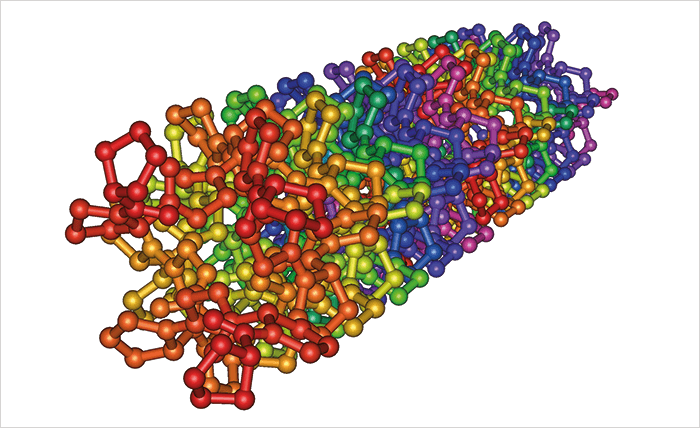Conceived in the late 1980s, two-dimensional Fourier transform ion cyclotron resonance mass spectrometry (2D FT-ICR MS) correlates the mass-to-charge (m/z) ratio of fragment and precursor ions in a single spectrum, but was put on the backburner until recent advances in computer technology and algorithms gave researchers the necessary processing capability. And though some studies have taken advantage of the new tech to analyze a handful of smaller proteins and peptides, no group has analyzed a protein nearly as large as collagen – the subject of a new study by researchers at the University of Warwick (1). The researchers found that 2DMS could “uncoil collagen” two times faster than conventional methods. “Collagen is a big protein, about 400 kDa, with many modified amino acids and crosslinks,” said Peter O'Connor, lead author of the study. “If we chop it into peptides using trypsin, and try to analyze the resulting mixture, there are thousands of peaks, and we can only assign a few dozen - the mixture is simply to complex.”
The group were already involved in analyzing smaller proteins like cytochrome-c and calmodulin with 2DMS, and thought it might be worth trying 2DMS with collagen. “The results were pretty exciting and show that 2DMS can now be applied to a wide range of protein and proteomics samples.” “Not having to select a precursor prior to fragmentation means you remove that selection bias from the data,” says O’Connor. “2DMS is also faster than a traditional LC-MS/MS run or an MS/MS run where every precursor is selected in series, at least for complex mixtures, for the same experimental resolution.”

The researchers are now looking to apply 2DMS to cancer and diabetes research. O’Connor suggests that for cancer, 2DMS will allow more detailed study of the pathways activated by possible anti-cancer drugs and thus allow more evidence-based assessment of their efficacy. Whereas for type-2 diabetes, the method will allow better study of the protein aggregation pathways that result in loss of beta cells and triggering of insulin dependence. “2DMS will allow better, faster, cheaper and a less biased analysis of all proteins in the sample, simultaneously,” says O’Connor. “It will alleviate (though not eliminate) the need for reliable chromatographic separations, which are the slow and fiddly parts of a normal proteomics experiment [...] Overall, it's an exciting development that offers a new tool to biomedical chemists who are interested in detailed molecular understanding of disease”.
References
- HJ Simon et al., “Uncoiling collagen: a multidimensional mass spectrometry study”, Analyst, 141, 1, 157-65 (2016). PMID: 26568361.




